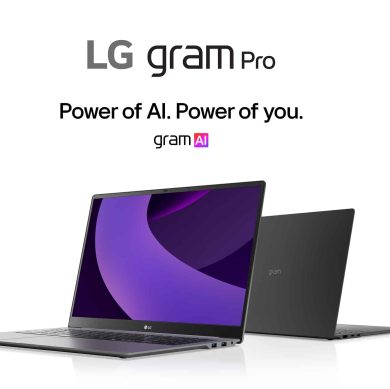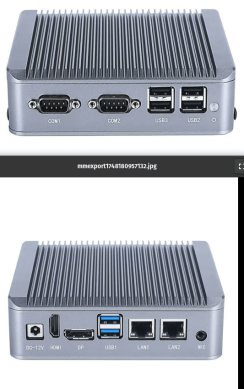Thin Client, MiniPC and Media Players
We are an association that covers embedded computing — thin clients, miniPCs, media players, and AIO resources. Managed endpoints come to mind as well. For more information, contact Craig Keefner at [email protected] or 720-324-1837. We also run a large APAC group on WhatsApp for our Shenzen participants.
Thanks to Kiosks Kiosk Machine solution partners Intel (Kathy) , Pyramid Computer (Zahdan), TPGI (Traci) and Olea Kiosks (Frank). Our existence is based solely on member support.
Feature Deal — $285 – Intel Kaby Lake, 6 USB, 2 Com, 2 LAN, up to 8GB RAM, DP-HDMI. This is Hystou unit and our contact is Ting Ting — contact [email protected]
Last 20 Posts
- MiniPC from GMKtec -i7 – $400 on Amazon
- Chrome OS Flex Certified Computers
- Digital Signage Vision Analytics – ASUS NUC Mini-PC
- New 1U and 2U Servers from AKHET
- Tariff Mini-PC Quote – US versus Poland versus Mexico – Apr12
- Touchscreen Chromebook Kiosks for FSA
- ASUS NUC MiniPC Overview and Roadmap
- Mini-PC with AMD Ryzen 3 ($180)
- Mini-PC and Thin Client News 2/27
- Mini-PC News for Feb 2025
- Fanless Embedded PC Intel Twin Lakes
- Mini-PC Modular Design – Intel
- Citrix Acquires Unicorn and More Thin Client Media Player News
- HP Elite t660 – Wolf Security
- LG’s “Hybrid AI” gram Laptops
- Embedded Computing — IBASE Receives 2024 IoT Edge Computing Excellence Award
- ChromeOS – Google Chrome Summit 2024
- Media Player for Digital Signage
- New Digital Signage Software for Cloud Released
- Media Player Digital Signage Videotel
The primary Thin Client, Mini PCs and Media Player providers we highlight are:
- LG Business — thin clients (aka IGEL)
- Pyramid Computer – embedded computing
- SiteKiosk – lockdown software
- Insight Touch – computer hardware
Members of our APAC group also provide thin client and media players
- Giada — providing digital signage player, edge computer, OPS/SDM and embedded motherboards for enterprise customers. Contact Lily at giadatech.com
- HYSTOU – top mini-pc manufacturer
- NEXCOM International — embedded computing — nexcom 2025-IPS-Brochure-compressed
- Centerm – thin client embedded
- Minix – embedded
- Newsmay – mini-PC
Recent Thin Client, MiniPC, Media Player and AIO News
Lockdown clients are available for those “old systems” as well. You can use Sitekiosk to lock down a Windows Terminal desktop to prevent unauthorized data transfers and web browsing as well as filter security threats.
And we extend that definition to include Chromebooks and ChromeOS which these days are often less than $300 and complete with remote management.
And now we have ultra-micro players creeping into the digital signage market.
Contact [email protected] with any questions.
What is a Thin Client aka Thinclient?
- Originally all data stored/accessed from cloud (a browser with no hard drive)
- NComputing had some really nice and super inexpensive “workstations”
- Became the marquee deployment for Windows Embedded
- Began adding new ports, functions until it almost became your standard PC (it might cost $600 too)
- With advent of raspberry, high-speed internet, and the pandemic to push it along it is now evolving back towards to ultra-micro less than $200
- A new player in the thin client market is the Raspberry Pi. You can get fully configured touchscreen units now from Amazon for less than $200.
- What we are NOT are the usual Dell or Lenovo office desktops. Those are “fat” clients and typically require singular discrete support and security.
- See our feature is the test and review of the Raspberry Pi 400 as a Thin Client (just add a monitor).
About Us
Since 1999, Thinclient.org has been reporting the thin client computing market and the ChromeBook, Zero Client, Android clients, Pi Raspberry Clients, and Thick Client market. Generally, the cloud computing market has been around since it started with companies such as Citrix back in the late 80s.
What is it?
A thin client is a lightweight computer that has been optimized for establishing a remote connection with a server-based computing environment.
The server does most of the work, which can include launching software programs, performing calculations, and storing data. This contrasts with a fat client or a conventional personal computer; the former is also intended for working in a client–server model but has significant local processing power, while the latter aims to perform its function mostly locally.
Thin client hardware generally supports a keyboard, mouse, monitor, jacks for sound peripherals, and open ports for USB devices (e.g., printer, flash drive, webcam). Some thin clients include legacy serial or parallel ports to support older devices such as receipt printers, scales or time clocks. Thin client software typically consists of a graphical user interface (GUI), cloud access agents (e.g., RDP, ICA, PCoIP), a local web browser, terminal emulators (in some cases), and a basic set of local utilities.
New hardware interfaces include socket-based enabled devices, eliminating the need for a physical USB connection. Bluetooth wireless connectivity is also a big factor for devices.
Computers
- Start with the usual suspects from Dell, HP, Wyse, 10Zig, IGEL, etc
- Add in Chromebooks
- Add in converted desktops running a remote desktop
- You can add in smartphones
- Hardware starts at $25 Pico ITX and Raspberry PI
- You have Power Over Ethernet versions
- Many of the conventional historical thin client computers have taken on so much of the functionality of a standard PC that they are almost a Thin Client in name only. The price can be higher than a standard desktop.
- We have AIO or All-In-One Computers – typically with touchscreens.
Other Links
- Thin Client vs. Thick Client vs. Zero Client: What’s the Right Fit for Your Business?(Opens in a new browser tab)
- Thin Client vs. Thick Client vs. Zero Client(Opens in a new browser tab)
- Thin Client Market Forecast August 2020(Opens in a new browser tab)
Last Modified
- MiniPC from GMKtec -i7 – $400 on Amazon
- ASUS NUC MiniPC Overview and Roadmap
- Chrome OS Flex Certified Computers
- Thin Client News – Citrix Hack and more
- Kiosk Mode for Linux – Lockdown Browser from KioWare
- McKesson & Citrix XenApp Case Study
- Fujitsu XenApp – Carea Finland
- State of the Cloud 2015 – Cote.io
- t630 HP Thin client VMworld Slideshow Presentation
- A Side-by-Side Comparison of AWS, Google Cloud and Azure
- PowerShell scripts: Windows vs Praim Agile. Which method will you choose?
- Italy’s favourite cake producers Bauli whips complexity with Citrix and Praim
- Skype – VMware optimised solution
- Rockwell Launches Industrial Computers and Thin Clients
- Benefits of centralized management
- Citrix Receiver for Linux 3.17: benefit from the latest HDX technology
- Digital Signage Vision Analytics – ASUS NUC Mini-PC
- New 1U and 2U Servers from AKHET
- Tariff Mini-PC Quote – US versus Poland versus Mexico – Apr12
- Touchscreen Chromebook Kiosks for FSA


